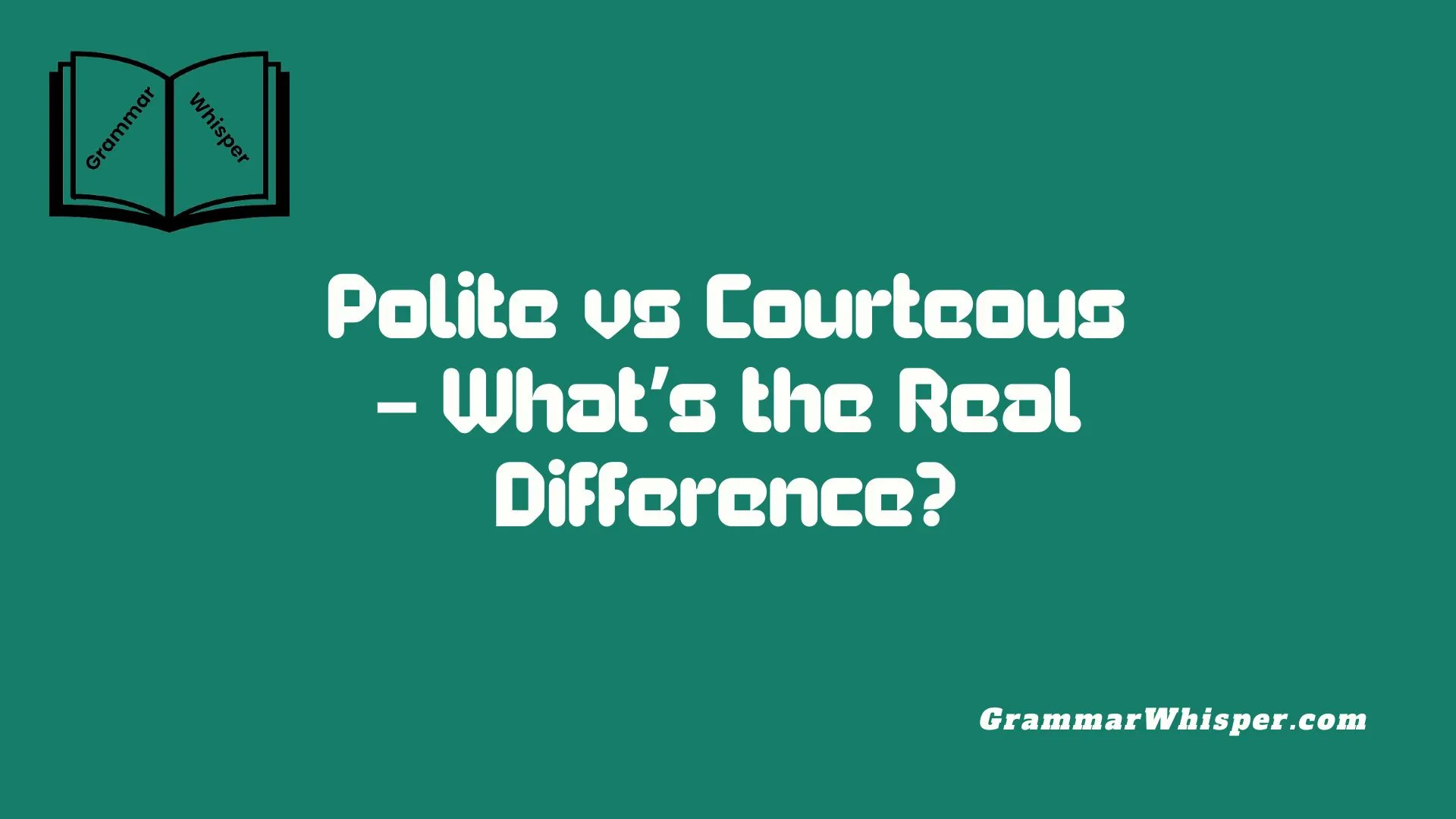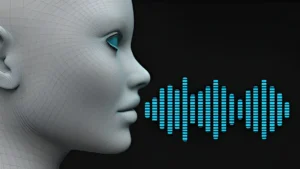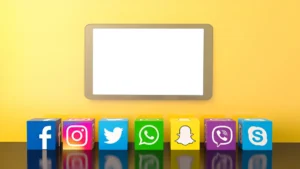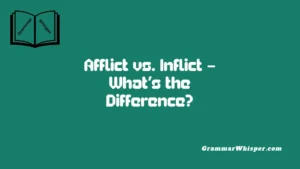Growing up in a multicultural neighborhood, I quickly noticed a subtle but powerful distinction between being Polite vs Courteous. While many people use these words interchangeably, they don’t always mean the same thing. Politeness tends to follow socially expected rules -like saying “please,” offering a handshake, or knowing how to behave in formal communication. It’s more about learned manners and doing what’s considered correct in a given situation. Courtesy, though, feels deeper. It involves a more genuine, thoughtful sense of consideration that comes from within. There’s a layer of heartfelt respect to it -a sense that someone is acting not just out of habit or routine, but because they truly value the other person.
Take this simple example: someone holds the door open just because that’s the norm. That’s politeness. But someone who notices your hands are full and waits an extra second to help? That’s courtesy -rooted in awareness of your situation. The latter carries more emotional weight because it stems from a real understanding of human subtleties and interaction. In daily life, politeness often acts like social glue -it helps keep society functioning smoothly. Courtesy, however, adds heart. It strengthens bonds through real empathy and connection, making everyday experiences more meaningful.
Understanding the Nuanced Meanings of Polite and Courteous
The words may seem similar, but they come from different roots that shape their meanings.
| Word | Origin | Meaning (Common Use) |
| polite | Latin politus (“polished”) | Adhering to social rules or etiquette |
| courteous | Old French curteis (“polite, courtly”) | Showing kindness, generosity, and respect |
Over time, polite evolved into compliance with manners (saying “please,” “thank you”), while courteous grew into gentler, considerate behavior that uplifts the other person.
Key Differences Between Polite and Courteous: A Semantic Breakdown
Politeness
- Often rule-driven (e.g., “May I come in?”)
- Can feel formal or impersonal
Courtesy
- Goes beyond rules -suggests warmth (e.g., “Let me hold the door for you.”)
- Emotionally engaging
| Aspect | Polite | Courteous |
| Tone | Formal, proper | Warm, heartfelt |
| Intention | Avoid social offense | Show genuine respect |
| Examples | Using proper titles | Offering help driven by empathy |
Politeness as a Social Strategy
Following polite norms has practical benefits:
- Maintains social harmony -saying “excuse me” eases tension
- Protects “face” in conversations (per Brown & Levinson’s politeness theory)
- Helps in conflict -indirect requests diffuse tension
Remember: cultural norms shape politeness. Japanese keigo vs. American casual speech offer a striking contrast.
Courtesy as a Form of Respect and Consideration
Courtesy shows in unspoken acts:
- Small gestures -offering to get someone coffee
- Listening attentively, not just waiting to speak
- Respecting boundaries, like personal space
In customer service, courtesy fosters loyalty -Politeness without empathy comes off robotic.
Polite vs Courteous in Real-Life Contexts
Consider these scenarios:
Example 1: Work Email
- Polite: “Dear Mr. Smith, please review attached report.”
- Courteous: “Dear Mr. Smith, I hope you’re well. When you have time, would you kindly review the attached report?”
Example 2: Office Door
- Polite: You hold the door and nod.
- Courteous: You hold the door, smile, and say, “Take your time -come on in.”
Example 3: Complaining
- Polite complaint: “I’m dissatisfied with this product.”
- Courteous: “I appreciate your help -can you assist with this issue?”
Cultural Perceptions of Politeness and Courtesy
Global customs show the nuance clearly:
- Japan: Bowing + formal language for respect
- UK: Understatement, apologies -the hallmark of understated courtesy
- USA: “Please” and “thank you” are polite; personalized gestures are courteous
- Remote cultures: High-context culture shows courtesy through attentive action -not always words
How Politeness and Courtesy Influence Relationships
Effective communication builds trust:
- Politeness ensures you’re not offensive
- Courtesy creates emotional connection
- Being overly polite can seem cold; being courteous without politeness may feel presumptuous
Take Care: Balance formality with warmth.
Tips to Be Polite Without Being Distant
- Avoid overly formal language in casual settings
- Use active listening -respond, don’t just reply
- Replace “Sorry” with “I appreciate” to express empathy
- Mind your tone and timing -a gentle softener works better than rigid phrasing
Ways to Show True Courtesy in Daily Life
- Small gestures -hand someone a coat, notice their comfort
- Be present -eye contact, nodding, asking sincere questions
- Respect boundaries -like social bubbles or sensitive topics
- Say “thank you” meaningfully, not out of habit
Professional Etiquette: Polite vs Courteous in the Workplace
- Emails:
- Polite: “Please find attached.”
- Courteous: “I hope your day’s going well! Attached is the report -thanks in advance.”
- Meetings:
- Hold the room door; it’s courteous
- Polite pacing: avoiding interruptions
- Courteous listening: summarizing what others said
- Leadership tone:
- Polite communicates respecting hierarchy
- Courteous earns respect through empathy
Body Language and Nonverbal Cues of Politeness and Courtesy
Nonverbal factors matter:
- Eye contact: steady, not intense
- Posture: open, relaxed angle
- Gestures: nodding, leaning in
- Physical space: culturally sensitive personal distance
- Facial expression: genuine smiles vs robotic politeness
Case Study: A Customer Service Scenario
Context: A shopper returns an unreadable shirt.
- Polite response: “I’m sorry you’re unhappy. Would you like a refund or exchange?”
- Courteous response: “I’m really sorry that didn’t work out. Let me personally show you some options that might fit better.”
Result: The customer felt cared for -not just serviced.
Quotes from Experts
“Courtesy is the outward sign of empathy; politeness is a pact, not a performance.” – Dr. Cynthia Palmer, sociologist
“Mindful behavior -courtesy -has deeper social impact than just following rules.” – Ken Sakamoto, cross-cultural communicator
Common Misunderstandings and Misuses
- Interchangeable use -blurs the difference
- Politeness as cold formality -“May I?” without warmth
- Courtesy mistaken for ingratiation -when gestures feel too theatrical
- Cultural misfires -what counts as courtesy in one culture may be impolite in another
Language Tips: Express Politeness & Courtesy Clearly
- Use “Would you mind…” not “Can you…”
- Add “If you don’t mind” to soften requests
- Phrase feedback positively: “One improvement suggestion…”
- Express gratitude: “I really appreciate your help.”
- Add touch of warmth: “Thanks so much -that means a lot.”
Final Thoughts
In a fast-paced world, people crave ease and warmth. Letting politeness cover the basics shows social awareness. Adding genuine courtesy shows emotional intelligence and care.
Choosing the right word or gesture isn’t just etiquette -it demonstrates thoughtfulness, control, and sincerity.
FAQs
What is the main difference between polite and courteous?
The main difference lies in intent and emotional tone. Being polite means following expected social rules -like saying “please” or “thank you.” Being courteous means going a step further to show genuine respect, thoughtfulness, and care. Courtesy often feels warmer and more sincere than simple politeness.
Can someone be polite but not courteous?
Yes, definitely. For example, a person might use all the right polite words but sound cold or disinterested. That’s politeness without warmth. Courtesy adds an emotional layer -it’s kindness in action, not just words.
Is courtesy more important than politeness in professional settings?
Both matter, but courtesy often leaves a stronger impression. While politeness helps maintain professionalism, courteous behavior builds trust, loyalty, and rapport. A courteous leader or coworker makes people feel valued, not just respected.
How can I sound more courteous in emails or messages?
To sound courteous, go beyond formality. Instead of writing, “Please see the attached file,” try: “I hope your day’s going well! When you have a moment, please take a look at the attached file. Let me know your thoughts -thank you!” This sounds more human, warm, and engaging.
Are there cultural differences in how politeness and courtesy are shown?
Absolutely. For instance, in Japan, politeness is deeply tied to honorific language and bowing. In the U.S., casual friendliness often replaces formality. In the UK, understatement and apologies are common forms of both politeness and courtesy. Always consider cultural context when expressing either.











